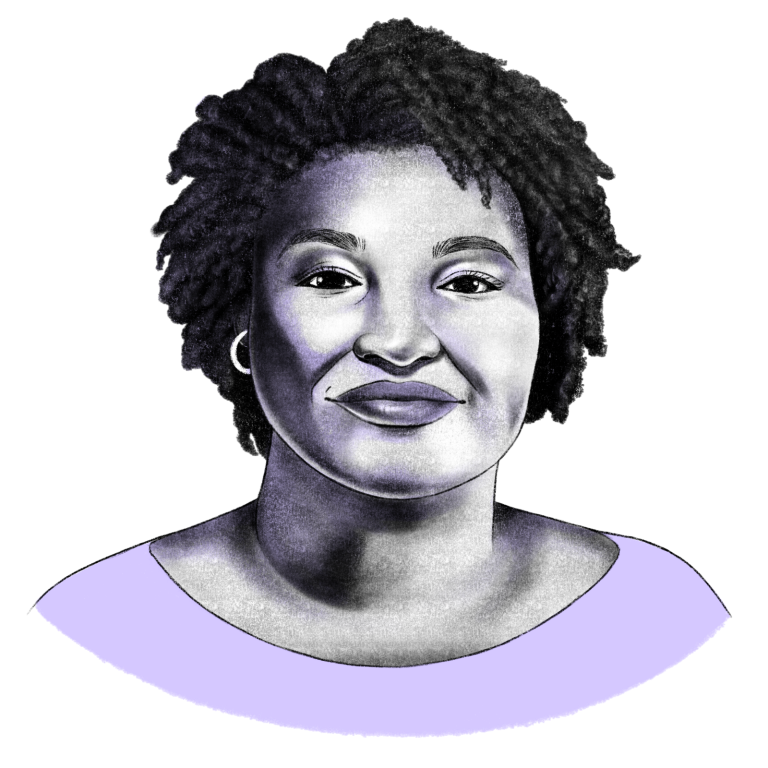As Grist unveils a new look and updated mission, we are checking in with notable figures working for a more just and sustainable future.
Jamie Margolin is only 19, but she’s not new to climate activism. She is part of a generation galvanized to call for climate action early in life. Like Greta Thunberg, Vanessa Nakate, and other young people around the world, Margolin was disturbed by the fingerprints of climate change she was seeing in her own life, and started to feel that her generation’s future on our planet was imperiled.
After witnessing plumes of smoke rolling over her hometown of Seattle during the 2017 wildfire season and then seeing the devastation of Hurricane Maria in Puerto Rico on the news that same year, the then-16-year-old co-founded a coalition for youth climate activists called Zero Hour. Since then, Margolin has sued the state of Washington for not doing enough to protect its young residents from climate change, helped organize a youth climate march in Washington, D.C., and 25 cities worldwide, and testified in front of Congress alongside Thunberg about the impacts of climate change on her generation.
Now, Margolin is a first-year college student at New York University. She’s been in this fight for a while, and she realizes that “you can’t just focus on the novelty of youth forever.” As she’s matured, she’s looked for allies across the age spectrum in the fight to slow the effects of climate change. “There are some very privileged youth who hardly feel the effects,” she told Grist. “And then there are elders on the front lines who have been feeling the effects since before my parents were born.”
The pandemic hit when Margolin was a senior in high school, and suddenly, everything changed: A bus tour that Zero Hour had been planning was canceled, and so was her high-school graduation ceremony. While in lockdown, Margolin started to see the same patterns playing out with the pandemic that she had been witnessing in her climate activism. “Because of inaction — and the action that was taken has been insufficient — there are thousands of unnecessary, preventable deaths, and that’s the same with the climate crisis,” said Margolin. “People are dying because of leaders just trying to push it off.”
Grist spoke with Margolin about how climate activism has changed during the course of her time working as a youth organizer, her feelings of climate anxiety, and her hopes for the future. This interview has been condensed and lightly edited for clarity.
Q. How did you feel about the prospects for climate action back when you started Zero Hour?
A. It was a combination of realism and naiveté. Part of me was a little bit, not hopeless — because obviously I wouldn’t have started it if I was hopeless — but I was a bit dismayed by the state of the world, and the state of the severity of the climate crisis, and the lack of care and knowledge in the general public. It was really overwhelming. So while I was determined to do everything I could, I wasn’t naive to the severity.
In 2016, when I was 14, I was under the illusion that Democrats equal climate justice, and if we have Democrats, that automatically means we have climate action. When in reality, I found out that that’s not the case. A Democrat doesn’t automatically equal a climate champion. I lost those illusions by 2017.
Q. Climate activism in the age of Trump had a clear mission, given that administration’s anti-environment agenda. I’m wondering how you feel about the future of climate organizing in the Biden administration.
A. I get frustrated when people are like, “Yay, we have a Democrat in office, that means they’re going to do something about climate change.” And I’m like, “No.” It’s obviously better than having a Republican, but Biden approved a bunch of new oil drilling permits in his first couple days in office and hasn’t supported a Green New Deal yet and hasn’t banned fracking. He did stop Keystone [XL, a proposed pipeline from Alberta, Canada, to Nebraska]. That’s great, but he hasn’t stopped Line 3 [from Alberta to Minnesota] or the Dakota Access Pipeline [from North Dakota to Illinois].
So while he’s definitely done some good — like stopping Keystone, rejoining the Paris Agreement — we need to keep pushing. And what the movement looks like in this administration is understanding nuance. That it’s not either all good or all bad. Trump is very black and white — everything is bad, that’s pretty clear.
But with Biden, we can’t just sit back and say, “It’s fine, he’s a Democrat and he believes in this, so it’s fine.” There has to be nuance where we can criticize what needs to be criticized and push where there needs to be a push for change, and also accept the good things, like stopping Keystone — while also not being overly celebratory and overlooking the bad things.
Q. And so how do you feel about prospects for climate action today, comparatively, to how you felt in 2016?
A. Because the culture has shifted so much and people really care now a lot more than they did when I first started Zero Hour, part of me feels less lonely in the movement. So many people are in this now in a way that they weren’t before, and it’s so mainstream in a way that it wasn’t before.
We’ve been working and working and working for so many years at this point, and still we’re at the point of, like, planetary collapse. It’s hard not to believe that it’s going to take a miracle for us to actually get it together, because after all this work, all these years, we’re kind of still where we started.
Here’s the thing: In 2017, one of the things that prompted me to Zero Hour was a wildfire that blew over the city of Seattle for the first time. And then in 2020, I live in New York now, all the way in Manhattan, [and we got] some of the smoke from the West Coast. That’s how bad it was. We didn’t have any fires on the East Coast, this is my first year living in New York, but we got some of the smoke all the way from the West Coast.
After all those years, the same wildfires. It was kind of a reminder that everything has changed, but at the same time, nothing has changed.
Q. You’ve said in the past that your activism was partially motivated by anxiety. I’m wondering if that’s a problem more broadly among youth activists, struggling with climate anxiety, and if so, what you found helpful in managing that?
A. One hundred percent — I feel like anxiety and climate anxiety is a massive part of the motivation. I mean, I’m not lying when I say “existential threat” is initially what drew me to start taking action. It’s definitely hard to plan and study for your future when it feels like nothing is changing and we’re hurtling towards planetary destruction. I guess the way that I draw boundaries is sometimes you’ve just got to stop thinking about it and distract yourself and do things that have nothing to do with climate change. But at some point, it just gets to be a lot.
Q. What is one of those things that you like to distract yourself with?
A. I’m studying film and television, and I want to not make documentaries about climate, but do narrative film and TV and movies. And I want to write for animation and stuff. So it’s just like picking a career that has nothing to do with this issue so I can have some sort of escape. Because if it’s all that you think about all the time, 24/7, I’m going to go crazy.
Q. Grist talked to you a year ago when COVID-19 first hit about how it was affecting you and your activism. How have you adapted and what might carry through to a post-pandemic time?
A. It definitely has changed because it’s more heavily reliant on the internet. So people are like, “Wow, that now means we can just focus on the internet.” And I’m like, “No, there’s extreme value in in-person organizing.”
I think everyone’s champing at the bit to actually have mobilizations in person. It’s just not the same community online. There’s only so far digital organizing can take you.





